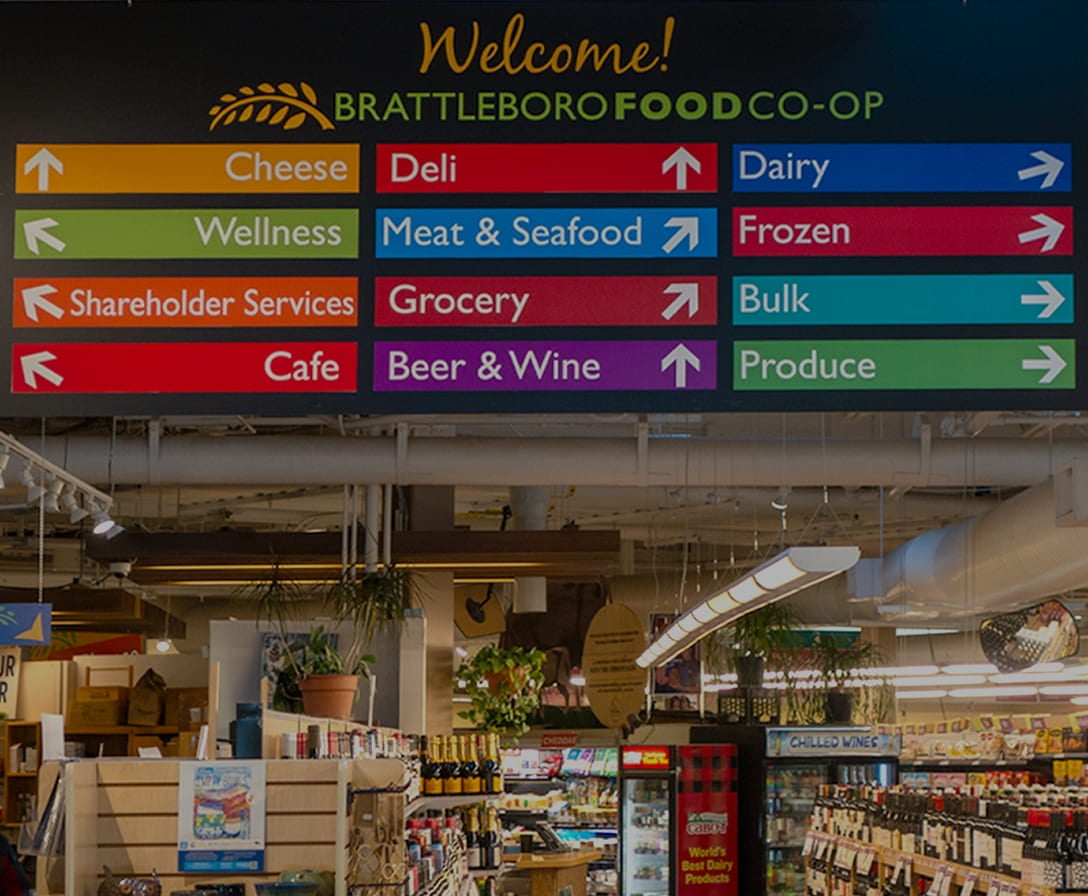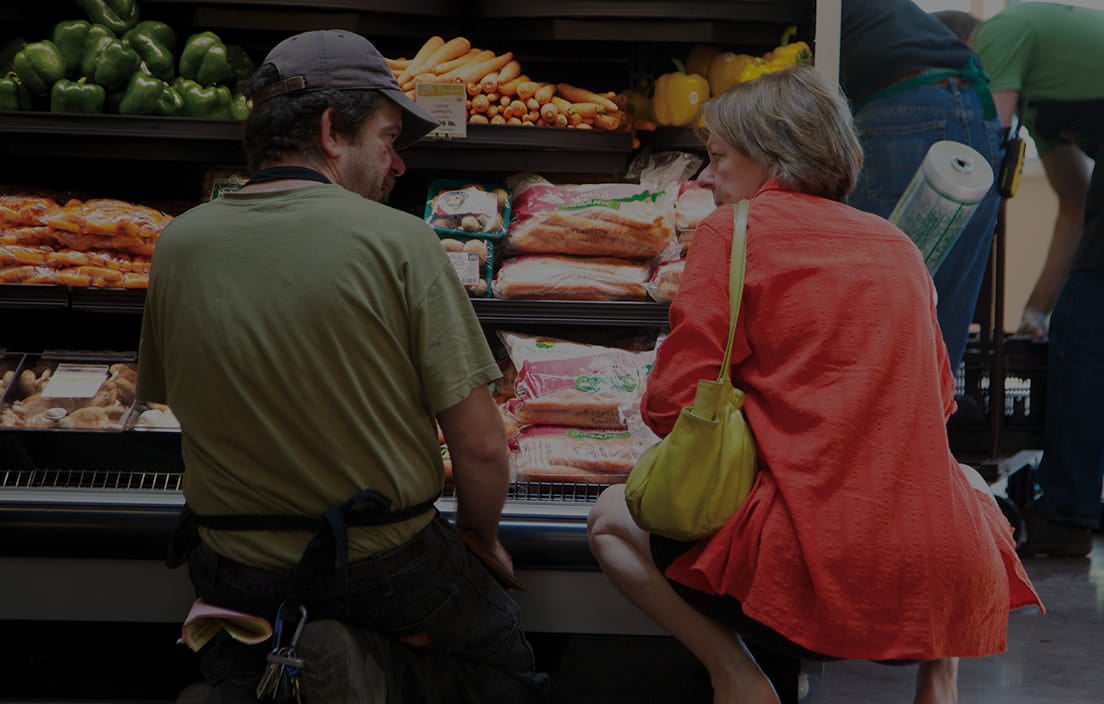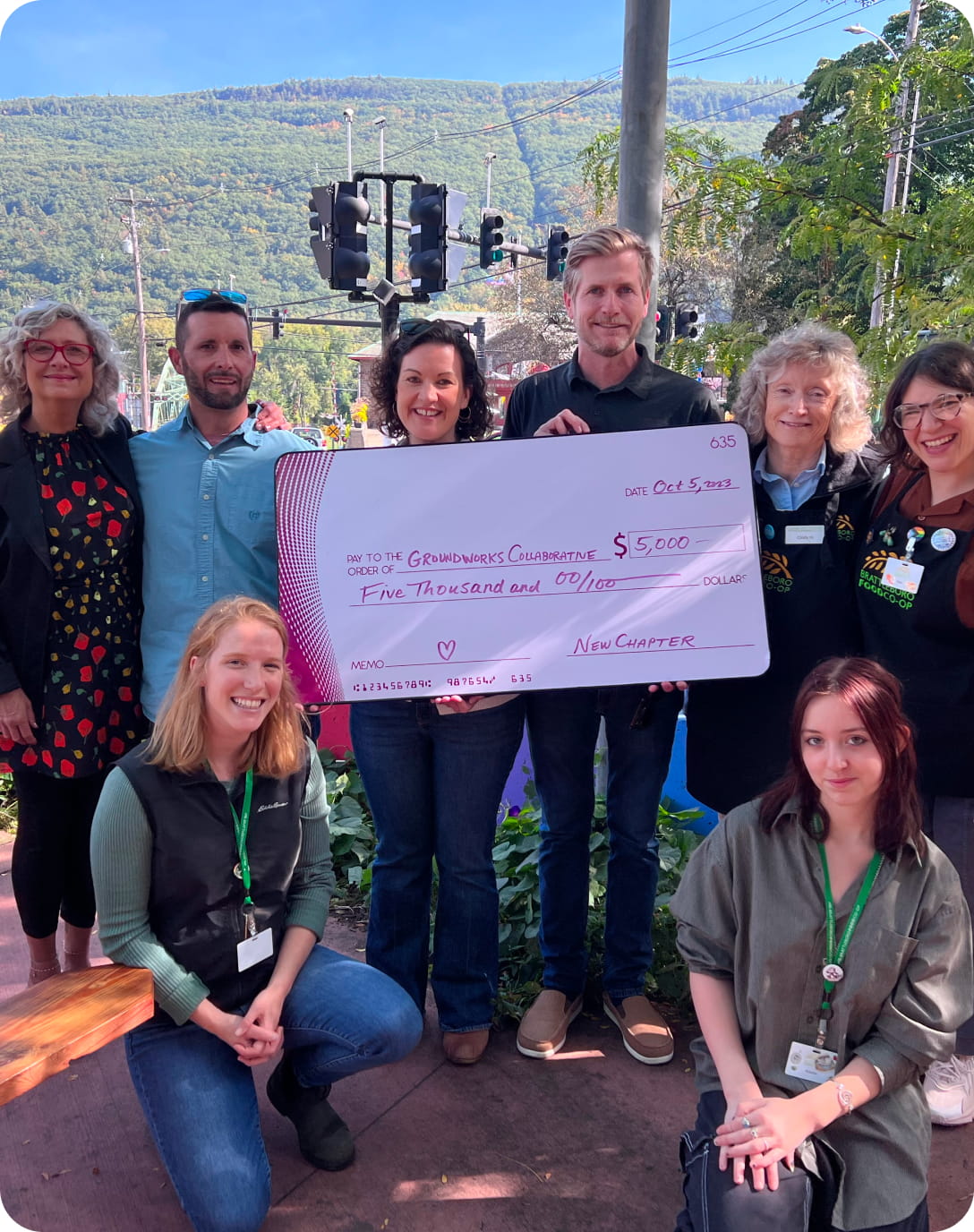Cabot Creamery Co-operative
It’s always been a tough road for dairy farmers. Back in the days before the invention of things like cream separators and pasteurization, everything had to be done by hand, and a lot could go wrong. Milk would often spoil before it even reached customers, whether during the difficult process of separating the milk from the cream or the long drive to the railroad depot with horse and cart. And doing all of this alone made it even harder.
Dairy farmers started taking their milk to creameries to relieve the burden of this expensive and labor-intensive work burden. A creamery is a facility where dairy farmers pay to have their milk turned into butter and cheese, instead of owning and operating all the equipment themselves. The original creamery from which Cabot Creamery Co-operative sprung was opened in 1893 in Cabot, VT. It was privately owned until ninety-four local farmers purchased it together in 1919. It is said that while they waited in line to have their milk processed, sometimes for long stretches of time, the farmers would discuss their work and come up with ways to innovate and collaborate, and that this is what led to the creation of Cabot Creamery Co-operative. Some of these farmers had only one cow, some had over thirty, but all of them agreed to contribute all their milk to the cooperative for at least two years. Cooperating gave these farmers more security and freed up valuable time and resources by sharing equipment, labor, transportation, and marketing.
From the beginning, Cabot Creamery Co-operative and the farmers who owned it went above and beyond the typical standards of quality, both in their delicious dairy products and in their commitment to cleanliness, sanitation, safety, and animal welfare. The farmers who formed the Cabot family rejected the malpractices employed by some farmers who were willing to cut corners to increase their profit; those practices were widespread enough to help inspire the formation of the Food and Drug Administration, which was created around the same time.
Today, Cabot Creamery Co-operative is owned by over 800 farm families who are just as committed to quality and the co-operative model as their forebears. One hundred twenty-seven of these farmers are in Vermont; the rest are spread all over New England and New York. Cabot joined with Agri-Mark Cooperative dairy in 1992, though Agri-Mark actually became a cooperative in 1917, two years before Cabot. When I spoke with Amber, spokesperson for Cabot/Agri-Mark (and child of an Agri-Mark farm herself), I was curious to understand the full breadth of Cabot and its operations. Our BFC is a consumer-owned co-op: shoppers own our store, and our board is comprised of shopper-shareholders who have been voted in by their shopper-shareholder peers. Cabot, on the other hand, is an agricultural cooperative, owned by its farmers. How does it work?
Amber told me that the entire Cabot/Agri-Mark area is divided into fourteen geographic regions. The farmers in each region vote one of their farmer peers onto the board of directors. Those elected farmer-directors hire the CEO and make other decisions about how the business should move forward. There are also other committees besides the board that other farmer-owners can be elected to, such as the Hauling Committee, which makes decisions about transporting milk from the farms to the several Cabot production facilities that are scattered around New England.
Over the years, the Cabot/Agri-Mark leadership has viewed the cooperative nature of their business as very important, and they’re proud of it. That’s why on all Cabot products you’ll see the phrase, “From our co-operative of farm families since 1919.” Back then, one of the requirements to become a part of the cooperative was to agree to support the cooperative “morally as well as financially.” In many ways, this is still true today: Cabot/Agri-Mark is more than just a business arrangement. Amber was clear that all of Cabot’s farmer-owners are very committed to the organization and recognize the importance of working together. She talked about a “passing of the torch” that has occurred from each generation to the next, with older farmers instilling an appreciation for the cooperative nature of their business in younger farmers.
Part of this appreciation comes from the help farmers receive from the cooperative. Echo Farm in Hinsdale, NH, is a Cabot owner. When they were featured as our October 2020 Producer of the Month, Beth and Courtney Hodge helped us understand how much support Cabot was willing to put forward regarding farm operations and marketing. “Cabot was integral in getting [a more advanced] milking machine installed and running. They also… provided extensive marketing support, from photos and resources to shared promos and sampling programs in-store.”
Another Cabot Creamery Co-operative owner is Elm Lea Farm at the Putney School, just a few minutes north of us in Putney, VT. High school students work with a herd of around forty cows as part of their educational experience, called the Farm program. They learn how to milk and feed cows and calves. They also learn about raising crops for the herd to graze on and other aspects of farming. Putney School’s Farm program also expresses the school’s emphasis on sustainability through its “intensive rotational grazing program,” and the students are involved in designing, building, and maintaining that system.
Elm Lea Farm and Echo Farm are just two examples of the wonderful network of Cabot owners. It’s also worth noting that, in contrast to some dairy cooperatives, Cabot no longer requires their farms to send all their milk to Cabot; in addition to their contributions to Cabot, Echo Farm makes delicious puddings that you can find in our refrigerated grocery department, and Elm Lea’s milk is used to make exceptional raw milk artisanal cheeses by Parish Hill Creamery in Westminster West, VT, which we sell in our Cheese department.
In addition to assisting each other via shared production facilities, hauling, and marketing costs, Cabot has a farm support team — people who visit individual farms and provide help and assistance when needed. They also employ a team of cheese graders who taste every single batch of Cabot, traveling around to each aging facility to determine the consistency and quality of Cabot’s world-class cheeses. Indeed, Cabot cheddars and other dairy products take home dozens of awards every year, including first place in the American Cheese Society’s Extra Sharp cheddar category just this year.
There are around one thousand non-farmer staff members of Cabot too. Most of them work at one of the cooperative’s many Vermont locations. There’s the Cabot campus, where there is a cheesemaking facility and a large cut-and-wrap facility; the headquarters/offices in Waitsfield; distribution in Montpelier; an aging/storage warehouse in St. Albans; the Farmer’s Store in Waterbury; and the cheese and whey production facility in Middlebury. Dairy is a unique agricultural commodity in that it’s highly perishable, and there’s no way to stop the flow of milk, 365 days a year. The network of plants functions to make sure the milk always has a place to go in time to be turned into delicious dairy products.
Cabot plays a vital role in our state by employing hundreds of Vermonters, and through its support of the dairy farm industry, which is constantly facing existential challenges. And it’s also an incredible example of the power of the cooperative business model. By working together to meet their common needs, dairy farmers in Vermont and across the northeast have been able to sustain their families, maintain healthy cows, preserve our beautiful Vermont landscape, and — last but not least — create mouth-watering dairy products that nourish thousands of people every day.
 Many people are surprised to learn that Cabot’s cheddar cheeses are naturally lactose-free. How is this possible? The aging process removes all the lactose from the milk. Lactose is a form of sugar; if you look at the Nutrition Facts panel on their cheddar cheeses, you’ll see that there are no sugars to be found, and thus, zero lactose! So, lactose-intolerant or -sensitive shoppers, feel free to eat Cabot cheddar with abandon!
Many people are surprised to learn that Cabot’s cheddar cheeses are naturally lactose-free. How is this possible? The aging process removes all the lactose from the milk. Lactose is a form of sugar; if you look at the Nutrition Facts panel on their cheddar cheeses, you’ll see that there are no sugars to be found, and thus, zero lactose! So, lactose-intolerant or -sensitive shoppers, feel free to eat Cabot cheddar with abandon!
By Ruth Garbus
About Producer of The Month

Shop Online

On Sale Now!

